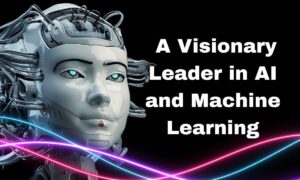In today’s technology-driven world, the terms “Data Science” and “Machine Learning” are frequently used interchangeably, often leading to confusion about their precise meanings and applications. Both fields play a pivotal role in the data-driven decision-making process, but they serve different purposes and utilize distinct methodologies. This article aims to shed light on the differences between Data Science and Machine Learning, providing a comprehensive understanding of their roles in the realm of data-driven insights.
Introduction
What is Data Science?
Data Science is a multidisciplinary field that focuses on extracting meaningful insights from raw data. It combines various techniques from statistics, computer science, and domain knowledge to analyze and interpret data. Data Science encompasses a broader scope, including data collection, data cleaning, data analysis, and data visualization. Its primary goal is to transform data into actionable insights, enabling organizations to make informed decisions.
Key Components of Data Science:
Data Collection: Data Scientists collect data from various sources, including databases, APIs, sensors, and more. They gather structured and unstructured data to create comprehensive datasets.
Data Cleaning: Data often contains errors, missing values, or inconsistencies. Data Scientists use data preprocessing techniques to clean and prepare the data for analysis.
Exploratory Data Analysis (EDA): EDA involves exploring and visualizing data to discover patterns, trends, and anomalies. It helps Data Scientists gain a preliminary understanding of the dataset.
Feature Engineering: This process involves selecting and transforming relevant features (variables) from the dataset to improve model performance.
Statistical Analysis: Data Scientists use statistical methods to derive insights from data, such as hypothesis testing, regression analysis, and clustering.
Machine Learning: While not the primary focus, Data Scientists often incorporate Machine Learning techniques into their workflow to build predictive models or automate certain tasks.
What is Machine Learning?
Machine Learning is a subset of artificial intelligence (AI) that focuses on developing algorithms and models capable of learning from data and making predictions or decisions without explicit programming. Unlike Data Science, which encompasses a broader range of activities, Machine Learning is primarily concerned with building predictive models and solving specific tasks.
Key Components of Machine Learning:
Training Data: Machine Learning models require labeled data for training. These datasets consist of input features and corresponding target labels, allowing the model to learn patterns and relationships.
Model Selection: Machine Learning involves selecting an appropriate algorithm or model architecture based on the nature of the problem, data, and desired outcomes. Common models include linear regression, decision trees, and neural networks.
Training: During the training phase, the model learns from the training data by adjusting its internal parameters. This process involves optimization techniques to minimize prediction errors.
Validation and Testing: After training, the model’s performance is assessed using validation and test datasets to ensure it can generalize well to new, unseen data.
Prediction: Once trained and validated, Machine Learning models can make predictions or classify new data points based on the patterns they’ve learned.
Key Differences
Scope: Data Science encompasses a broader scope, including data collection, cleaning, exploration, and statistical analysis. Machine Learning, on the other hand, focuses primarily on developing predictive models.
Goal: The primary goal of Data Science is to extract insights and knowledge from data for decision-making. Machine Learning’s goal is to build models that can make predictions or decisions based on data.
Techniques: Data Science incorporates a wide range of techniques, including statistical analysis, data visualization, and data preprocessing. Machine Learning specializes in algorithm development and model training.
Applications: Data Science is applied in various domains, such as business intelligence, healthcare, and social sciences. Machine Learning finds applications in tasks like image recognition, natural language processing, and recommendation systems.
Interdisciplinary Nature: Data Science often involves collaboration with domain experts and business analysts. Machine Learning is more engineering-centric, focusing on algorithm implementation and model optimization.
Conclusion
Data Science and Machine Learning are closely related but distinct fields within the realm of data-driven decision-making. Data Science encompasses a broader range of activities, from data collection to statistical analysis, with the aim of extracting insights from data. Machine Learning, on the other hand, is a subset of AI that specializes in developing models capable of learning from data and making predictions or decisions.
Understanding the differences between these two fields is essential for organizations looking to leverage data for better decision-making. While Data Science provides the foundation for data analysis and interpretation, Machine Learning empowers businesses to build predictive models that can automate tasks and provide valuable insights.
Ultimately, both Data Science and Machine Learning play integral roles in the data-driven era, offering unique tools and methodologies to unlock the potential of data and drive innovation across various industries.



































